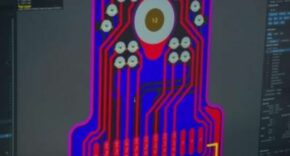But times are changing and, increasingly, we’re seeing a sharper focus on preventative care, with patients being encouraged to take a more active approach to their wellbeing. The Secretary of State for Health and Social Care, Matt Hancock, made his long-term vision clear, announcing that the NHS will start shifting emphasis towards preventative healthcare, calling on people to take greater responsibility for their own health by quitting smoking, staying active and reducing alcohol, salt, sugar and fat intake. The move to a more proactive approach comes at a time when obesity-related hospital admissions rose 15% in a year and smoking represents 4% of all hospital admissions. To make this happen and give people the means to take control of their care, Hancock is focused on improving the efficiency of IT services across the NHS and allowing GPs to choose technologies that best meet their needs.
However, the key to preventative care isn’t just about telling people what to do, it’s about engaging with them and providing technology that enables them to closely monitor themselves. When talking about the introduction of the new NHS health checks last month, Hancock explained that, “Personalised, preventative healthcare is mission critical to the future-fit healthcare service we want to build. We must harness the latest technology and techniques to move away from the one-size-fits-all approach of the past”.
Technology to the rescue
Internet-enabled medical technologies have great potential to modernise disease management and diagnostics, empowering patients and enabling truly person-centred care. The rise of the Internet of Medical Things (IoMT) is being driven by a growing number of connected medical devices that are able to create, collect, analyse and communicate data or images to healthcare providers or cloud repositories.
Connectivity between devices enables real-time patient care; and technologies, such as fitness trackers and smart inhalers (that monitor when and how effectively patients take medicine) can offer virtual health assessments for patients either at home or during a hospital stay. Data such as heart rate, blood pressure, breathing, activity or weight levels, can be transmitted from an application or the device itself to show how a person’s health is evolving, providing the ability to streamline clinical processes and information flows as well as improve healthcare delivery.
As hospitals and healthcare providers begin to use more connected technologies to monitor health and wellbeing, they will also need to get to grips with the management of the vast amount of data from medical wearables, connected imaging devices and monitoring technologies.
The emergence of IoMT data
While IoMT looks set to revolutionise the face of healthcare, as always with new technology, there are concerns that need to be addressed. The process of merging connected medical devices into established care pathways is a challenge that requires significant cooperation from multiple stakeholders, stringent security and a centralised approach. For information to move freely, medical technology companies will need to work with healthcare providers to grant access to the data, allowing it be shared from the devices, collated and analysed.
Once gathered, IoMT data will need to be managed, stored, protected and easily accessible to clinicians (with the appropriate permissions) through a hospital Electronic Patient Record (EPR) system or clinical portal. An independent clinical archive (ICA) is well positioned to manage data from connected medical devices, as it provides a standard-based repository, independent of the application, for a wide array of patient data from across the healthcare ecosystem. Whether data is structured or unstructured, an ICA is able to centrally store, protect and manage a variety of information such as clinical images, scanned patient documents through to observations and medications. By capturing a range of meta-data for the ingested information, an ICA enables quick and easy discovery and retrieval by clinical staff, available directly through the hospital’s primary EPR, offering access to a rich patient record and visibility of connected medical device data.
Managing patient records centrally prevents information sprawl, i.e. the persistent scattering of data across disparate systems and devices across a hospital. But, it also makes it easier to protect and preserve valuable patient information and mitigate security risks, such as cyber-attacks. Most importantly, by consolidating medical data, clinicians gain a full picture or 360-degree view of a patient’s medical history on which to base care decisions.
There is no doubt that IoMT will transform healthcare and redefine how devices and people interact and connect with one another, providing new tools and efficiencies to ensure patients are better cared for, costs are reduced, and treatment outcomes are greatly improved. Accessibility to IoMT information will be key to its widespread adoption and, increasingly, we will see the evolution of a digital ecosystem where data is stored, protected and shared from a central platform.
Jamie Clifton, Head of Innovation and Research at BridgeHead Software













